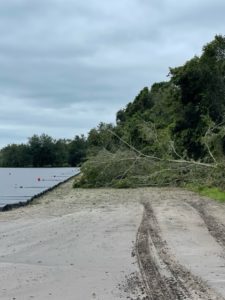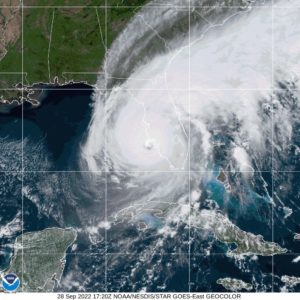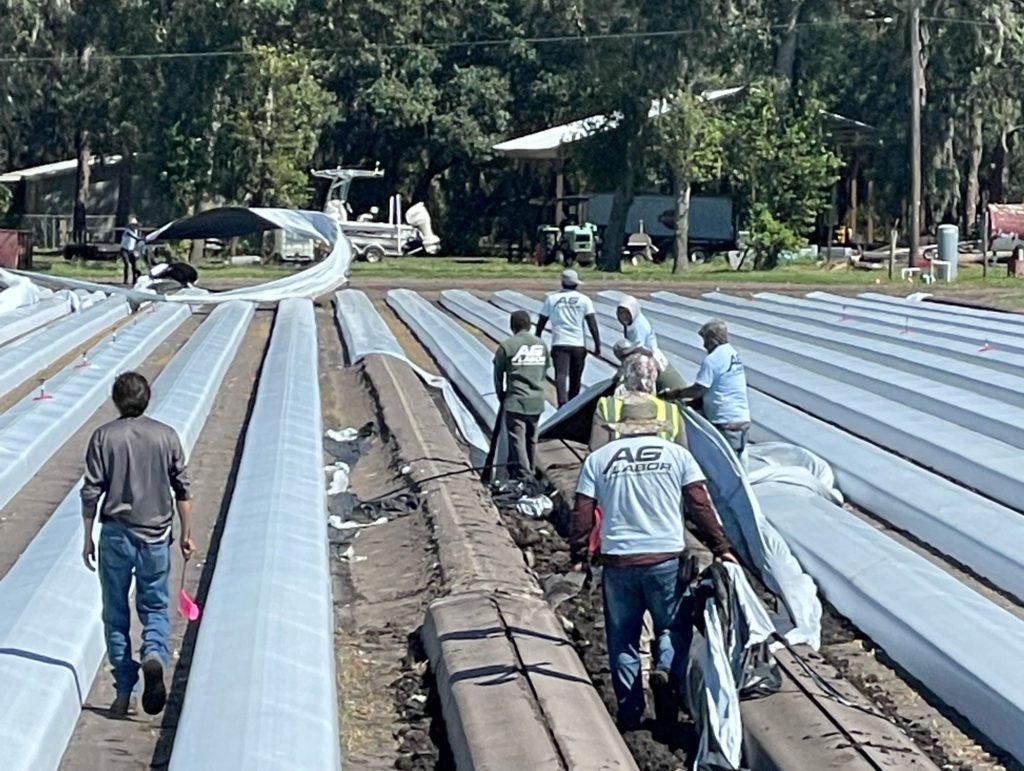Oct 6, 2022Growers assess Hurricane Ian damage
Florida growers are surveying damage to crops and property, following Hurricane Ian’s deadly landfall.
Ian’s winds and rains caused massive human and property losses and harmed a variety of crops, from citrus to zucchini squash. Some items could see losses as high as 50%. The death toll has climbed to more than 100 with property losses estimated at $57 billion.
Ian struck Sept. 28, during the critical planting time for Florida fall produce, which generally begins harvesting in November. The full extent may not be known for several weeks, said Christina Morton, Florida Fruit & Vegetable Association’s director of communications.
“We will know more on the impact when fields dry out, roads are cleared, and growers are able to get out and assess damage,” she said Oct. 5.


The Category 4 storm, which made landfall north of Fort Myers, brought high winds, torrential rains and significant flooding. Growers are dealing with extensive power outages, flooding and the inability to access fields, groves and packinghouses.
Facing “widespread destruction of crops, buildings, fencing and other property losses due to substantial wind and water damage,” farmers and ranchers throughout the state are repairing greenhouses, structures, irrigation systems and other machinery and equipment, according to a Florida Farm Bureau statement on its website. The organization is working with its members on damage assessment. “Southwest Florida farm families are without power and off the grid. They face weeks of rebuilding.”
Fall plantings harmed
Growers are working to ensure Florida will be ready for the fall harvest season, Morton said.
“Hurricane Ian brought heavy rains and strong wind to virtually every part of the state. We continue to watch for impacts on a variety of specialty crops grown here in Florida, including green beans, sweet corn, sugar cane, tomatoes, citrus and more,” she said.
While the storm caused significant damage to farms in some pockets, Morton said FFVA is beginning to hear that other areas were not as badly damaged as some first thought. Growers who were able were out in the fields over the weekend of Oct. 1-2 planting and preparing for the fall season.
“In some cases, growers will be able to replant, and some have already even begun that process, whereas others are still facing challenges getting into their fields and groves,” Morton said. “The extent of any impact will vary greatly by crop and geography around the state and even field location within the same area.”
While much destruction was reported in southwest Florida, wind and rain from Ian’s outer bands extended into central Florida, affecting fields of strawberries, tomatoes and vegetables, including bell peppers and cucumbers. The state’s citrus industry experienced major losses.
Winds blasted tomatoes and peppers and tattered leaves, but plants in southwest Florida are expected to survive. More sensitive crops, including green beans and melons, experienced losses of up to half or more, said Gene McAvoy, crop consultant and former southwest Florida regional vegetable and horticultural Extension agent Gene McAvoy.
More spraying
McAvoy visited southwest Florida fields and groves.
“In general, we have sustained some major injuries to the crops,” he said Oct. 4.


Growers will spend more money protecting crops through doubling-up on fungicides, McAvoy said. “We will see more fungicides going out this fall as a result of this,” he said.
McAvoy said he expects growers to endure replanting headaches as one of the state’s nurseries was trying to secure plants. There weren’t any plants available if they haven’t been reordered, he said.
Ian is expected to reduce Florida tomato volume. The Central and South Florida fall tomato crops will be smaller. Grape and cherry varieties begin harvesting in mid-October with romas and beefsteak rounds in mid- to late October. Harvesting on some farms may be slightly delayed as fields are recuperated, said Florida tomato exchanges’ Michael Schadler.
Tomatoes hurt
“It will be weeks before we know the full extent of any volume reduction resulting from the hurricane, but growers were able to get quickly back into their fields after the storm to begin cleaning up any damage,” Schadler said. “Most tomato fields avoided significant flooding and the plastic-covered beds remained intact better than we initially expected. There is a fair amount of plant defoliation in some fields, but we are cautiously optimistic that many of the impacted plants will bounce back. Tomato plants are resilient and we’ve had very favorable weather since the storm to help begin recuperating the fields. As harvest continues throughout the fall, we expect yields to be reduced, but much of the crop will still be harvested.”
In southwest Florida, heavy rains struck Immokalee, which, along with Homestead, Florida, produces winter tomatoes and vegetables. Most plastics stayed in place, but some fields saw some blowouts. Maybe 10% of that required patching, but growers quickly got that under control, McAvoy said.
Rains exceeded 12 inches in central Florida counties, which grow primarily citrus and melons. Growers found it difficult to remove water from their fields and groves in a timely fashion, he said.
As Florida strawberry growers were beginning planting, some delayed plantings, avoiding serious damage to their December and January crops. In the central Florida growing regions of Plant City and Duette, winds blew plastic off beds and water caused loosening of plastic, which were repaired, said Dustin Grooms, farm manager and proprietor of Plant City’s Fancy Farms.
Trees were down along the perimeters of fields, with debris throughout fields. Worker housing was damaged and repaired, with the Plant City area escaping serious harm. Grooms said he heard that growers in the Duette southern strawberry growing region saw up to 15% of its plastic damaged by wind.
“We are very fortunate to not have the damage like other crops,” Grooms said. “There’s just some devastation going on.”
Honeybee crisis
On Sept. 30, after two days over Florida and moving into the Atlantic Ocean, Ian turned course and made landfall at Georgetown, South Carolina. South Carolina ag officials were gauging damage.
“So far it appears most farmers did not suffer serious damage to their crops,” said Eva Moore, communications director for the South Carolina Department of Agriculture. “We are in the middle of harvest season for many row crops, so a lot of what I’ve heard has more to do with those than specialty crops. As for berries, vegetables and melons, we are fortunate that we are where we are in our season, and because of how relatively quickly the storm moved through our state. We are keeping Florida farmers in our thoughts.”
Ian also threatens bee colonies, which could harm blueberries and squash outside of the hurricane’s path. Around 400,000 colonies are at risk, with many already known to be submerged in water and in distress, according to a Bloomberg report that quoted Jamie Ellis, a University of Florida Department of Entomology and Nematology professor of entomology.
“Any loses of honeybee colonies can lead to a reduction of honeybee pollination and a reduction of food reliant on that pollination,” Ellis said in the report. “Fewer bees mean less food.”
Growers remain optimistic for recovery.
“What we do know is that the resiliency of our farm families is evident in the aftermath of the category 4 Hurricane Ian that ripped through Southwest Florida,” according to the Farm Bureau statement.
—Doug Ohlemeier, assistant editor
TOP PHOTO: Workers repair plastic blown off strawberry plant rows in the Plant City, Florida, area by Hurricane Ian. Photo: Dustin Grooms















